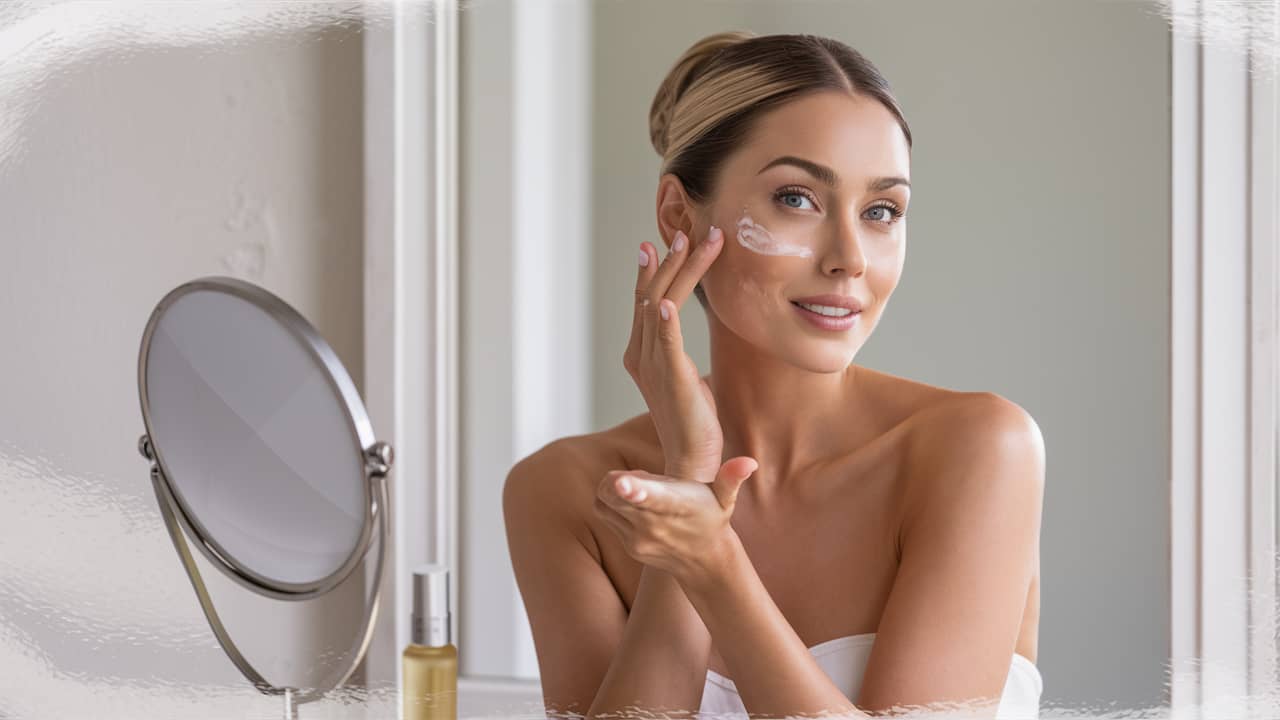Achieving radiant, youthful skin is a goal for many, and retinol peels have emerged as a favorite solution among skincare enthusiasts and professionals. But what exactly is a retinol peel, and how does it differ from other chemical peels?
You’ll read in this article:
What is TCA peeling ?
Skin issues treated by TCA peeling
Types of TCA peeling
Top recommended brands and their products
How to use TCA peeling at home safely
FAQs
What is TCA peeling ?
TCA, or trichloroacetic acid, is a chemical solution used for exfoliating the skin. It works by breaking down the top layers of the skin, prompting the natural regeneration process. The result is a fresh, rejuvenated surface that looks and feels smoother and more even.
This treatment has become a favorite for those who want noticeable skin improvements without resorting to invasive procedures. It’s suitable for various skin types, and the results can include reduced wrinkles, diminished acne scars, and a more consistent skin tone. The science behind TCA peeling is straightforward—by removing dead skin cells, you pave the way for newer, healthier skin to emerge.
Small yet powerful, TCA peeling offers an accessible way to achieve professional-grade skin rejuvenation at home. With proper care and adherence to instructions, many users have found lasting improvements in their skin texture and appearance.
Skin issues treated by TCA peeling
TCA peels are celebrated for their versatility in treating a wide range of skin concerns. If you’ve struggled with any of the following issues, TCA peeling might be the ideal solution:
- Acne scars: By promoting new cell growth, TCA peels help to reduce the appearance of acne scars and even out the skin’s surface.
- Hyperpigmentation: Uneven skin tone, sun spots, and melasma can all be addressed by the exfoliating properties of TCA.
- Fine lines and wrinkles: The increased collagen production following a TCA peel helps smooth out fine lines and reduce the visible signs of aging.
- Sun damage: Over time, sun exposure can lead to a dull, uneven complexion. TCA peels can help reverse some of this damage by sloughing away dead, sun-damaged skin.
- Rough texture: If your skin feels rough or uneven, a TCA peel can help refine the texture and promote a smoother finish.
Each session works to gently break down the outer layers of the skin, allowing your natural regeneration processes to kick in. Over time, you’ll notice a significant improvement in skin clarity, texture, and overall radiance.
By targeting these common concerns, TCA peeling is not only a corrective treatment but also a preventive measure, helping to maintain your skin’s youthful vitality.
Types of TCA peels
Not all TCA peels are created equal. The concentration of the acid determines the depth of the peel and the specific results you can expect. Here are the most common types available for at-home treatments:
TCA 10
- Superficial peel:
This low concentration is ideal for very mild exfoliation and is best for beginners or those with extremely sensitive skin. - Minimal peeling effect:
Expect a gentle refresh rather than significant peeling. - Ideal for:
Dull skin, light hyperpigmentation, and minor texture concerns.
Recommended product: Skin Obsession 10% TCA Peel
TCA 15
- Mild exfoliation:
TCA 15 is perfect for beginners or those with sensitive skin. It provides a gentle exfoliation that improves overall skin tone and texture. - Minimal downtime:
With lower concentration levels, TCA 15 typically has minimal side effects, making it an excellent choice for first-time users. - Ideal for:
Light hyperpigmentation, fine lines, and minor texture issues.
Recommended product: Perfect Image TCA 15% Gel Peel
TCA 25
- Moderate depth peel:
A step up from TCA 15, offering deeper exfoliation and more noticeable improvements in skin tone and texture. - Visible peeling effect:
Expect some peeling, with results appearing over a week. - Ideal for:
More stubborn pigmentation, fine lines, and minor acne scars.
Recommended product: MedPeel 25% TCA Home Peel
TCA 35
- Medium depth peel:
TCA 35 offers a more robust treatment aimed at addressing deeper wrinkles, moderate acne scars, and significant sun damage. - Enhanced results:
Due to its higher concentration, this peel provides a more noticeable improvement in skin texture and tone. - Ideal for:
More pronounced skin issues where a deeper exfoliation is needed, yet still safe for at-home use when carefully applied.
Recommended product: Dermalure 35% TCA Peel
TCA 50 and beyond
- Deep peel:
Higher concentrations like TCA 50 penetrate deeper layers of the skin and should generally be performed by professionals. - Longer recovery time:
Due to its intensity, users should expect more downtime and a higher risk of irritation. - Ideal for:
Severe wrinkles, deep acne scars, and sun damage under professional supervision.
Recommended product: MedPeel 50% TCA Deep Peel (for professional use)
Top recommended brands and their products
When choosing a TCA peel, opt for reputable brands that offer high-quality formulations. Some trusted names include:
- MedPeel : Offers a variety of concentrations, including MedPeel 25% TCA Home Peel and MedPeel 50% TCA Deep Peel.
- Perfect Image : Known for its professional-grade solutions, such as Perfect Image TCA 15% Gel Peel.
- Skin Obsession : Provides budget-friendly TCA peels, including Skin Obsession 10% TCA Peel.
- Dermalure (for professional use only): Highly rated for its effective and safe options, like Dermalure 35% TCA Peel.
When selecting a TCA peeling product, always consider your skin type, the specific issues you want to address, and start with a lower concentration if you’re new to chemical peels. Reviews and detailed instructions are invaluable, so take the time to research and choose a product that has worked well for others with similar skin concerns.
How to use TCA peeling at home safely ?
Using a TCA peel at home requires careful preparation and adherence to safety guidelines. Follow these steps to ensure you achieve the best results while protecting your skin:
- Preparation is key:
- Cleanse your face thoroughly with a gentle cleanser.
- Remove all makeup and impurities.
- Conduct a patch test on a small area of your skin 24 hours before the full application.
- Application process:
- Apply the TCA solution evenly using a clean brush or applicator.
- Follow the manufacturer’s instructions carefully regarding the duration the solution should remain on your skin.
- Monitor your skin closely during the application.
- Aftercare routine:
- Rinse off the solution gently with cool water once the recommended time has elapsed.
- Use a soothing, alcohol-free toner to balance your skin.
- Apply a rich moisturizer to hydrate and protect the new skin layer.
- Always follow up with a broad-spectrum sunscreen (SPF 30 or higher) since your skin will be more sensitive to UV rays post-peel.
Our recommandations and medical sources
To ensure safety and maximize results, dermatologists and skin specialists highlight some essential guidelines when using TCA peels at home:
Peeling Duration and Recovery
According to dermatology protocols, visible peeling usually starts within 3–5 days after application. Complete recovery, with fresh new skin, typically takes 7–10 days (Conrad Petersen, MD).
Skin Preparation (“Priming Phase”)
Experts recommend preparing the skin at least 4 weeks before a TCA peel with gentle exfoliants such as AHA (alpha hydroxy acids) or retinoids. This step improves peel penetration and reduces the risk of uneven results (source : Platinum Skincare).
Post-Peel Skincare
After a TCA peel, dermatologists emphasize the importance of:
- Using a gentle, fragrance-free cleanser
- Applying intensive hydration with creams or serums
- Protecting the skin with broad-spectrum SPF daily
- Using soothing compresses (such as diluted vinegar or cooling masks) to calm irritation
These recommendations are outlined by both Conrad Petersen, MD and Jennifer Murdock, MD in their patient care guides.
Risks and Precautions
To avoid complications, medical professionals strongly advise:
- Do not pick or peel flaking skin manually
- Avoid direct sun exposure during healing
- Refrain from excessive exercise, sauna, or swimming until recovery is complete
Always perform a patch test before applying TCA peel to the entire face.
Conclusion
TCA peeling is an excellent option for those who want to rejuvenate their skin without resorting to invasive procedures. With the right product and proper application techniques, at-home TCA peels can address concerns like acne scars, hyperpigmentation, fine lines, and sun damage. Start with a milder formulation, such as TCA 15, if you’re new to chemical peels, and consider transitioning to a stronger option like TCA 35 as your skin builds tolerance.
Remember, consistency and patience are essential to achieving the desired results. Always follow safety guidelines and aftercare instructions to minimize side effects and maximize benefits. Your journey to smoother, radiant skin begins with careful, informed steps. Trust in your routine, monitor your progress, and embrace the transformation that comes with each peel session. With dedication and the right approach, you can unlock the secret to a more youthful, vibrant complexion.
FAQs about using TCA peels
TCA (Trichloroacetic Acid) is a chemical peel that exfoliates the skin by breaking down proteins in damaged cells. It penetrates the epidermis to stimulate collagen production, improving texture, scars, and pigmentation.
Start with 10–15% TCA for at-home use. Higher concentrations (20%+) carry greater risks and should only be used by experienced users or professionals.
TCA works for most skin types (I–IV on the Fitzpatrick scale) but may not suit very sensitive skin or those with active eczema, rosacea, or infections. Patch-test first.
Expect a mild to moderate stinging or burning sensation during application, which subsides after neutralizing or rinsing. Ice packs or aloe vera can soothe post-peel irritation.
– Stop retinoids, AHAs/BHAs, and exfoliants 3–5 days prior;
– Cleanse with a gentle, non-abrasive cleanser;
– Avoid sun exposure for 1–2 weeks pre-peel.
1. Cleanse: Remove oil and dirt.
2. Degrease: Use alcohol or acetone to prep skin.
3. Apply: Use a brush/cotton pad in thin layers (avoid eyes/mouth).
4. Neutralize: Rinse with water or use a neutralizing solution (if required).
5. Moisturize: Apply a healing ointment (e.g., Vaseline or balm).
– Sun exposure (use SPF 30+).
– Picking or peeling flaking skin.
– Harsh products (retinoids, acids) for 1–2 weeks.
– Heavy makeup until peeling subsides.
Expect 3–7 days of redness, flaking, and sensitivity. Deeper peels (20%+) may require up to 2 weeks of recovery. Avoid social events during peeling phases.
Most users see improvements in 1–3 sessions spaced 4–6 weeks apart. Deeper concerns (e.g., scars) may require 4–6 treatments.
The results of a TCA peel can last from several months up to a year, depending on the concentration used and your skincare routine. Regular sun protection and hydration help prolong the benefits.
TCA peel can improve acne scars by smoothing skin texture and fading discoloration. However, deep scars may require multiple sessions or additional treatments.
Most experts recommend spacing TCA peels every 4–6 weeks. Doing them too often can irritate the skin and slow down recovery.
No. TCA peels are not recommended during pregnancy or breastfeeding due to limited safety data and potential systemic absorption risks.
TCA peel can be done safely at home only with low concentrations (10–15%) and proper preparation. Higher strengths should always be performed by a dermatologist.
Yes, TCA peels can lighten hyperpigmentation, sun spots, and melasma by removing damaged skin layers. Multiple sessions may be needed for best results.
People with very sensitive skin, active infections, or those who are pregnant or breastfeeding should avoid TCA peels. Always consult a dermatologist if unsur
Consult a professional if:
– You have deep scars, melasma, or severe sun damage.
– You’re unsure about peel strength or aftercare.
– You experience excessive swelling, blistering, or infection.
Always prioritize safety over experimentation, and never skip patch-testing!
No. Retinol products are not recommended during pregnancy or breastfeeding.
What to read next


